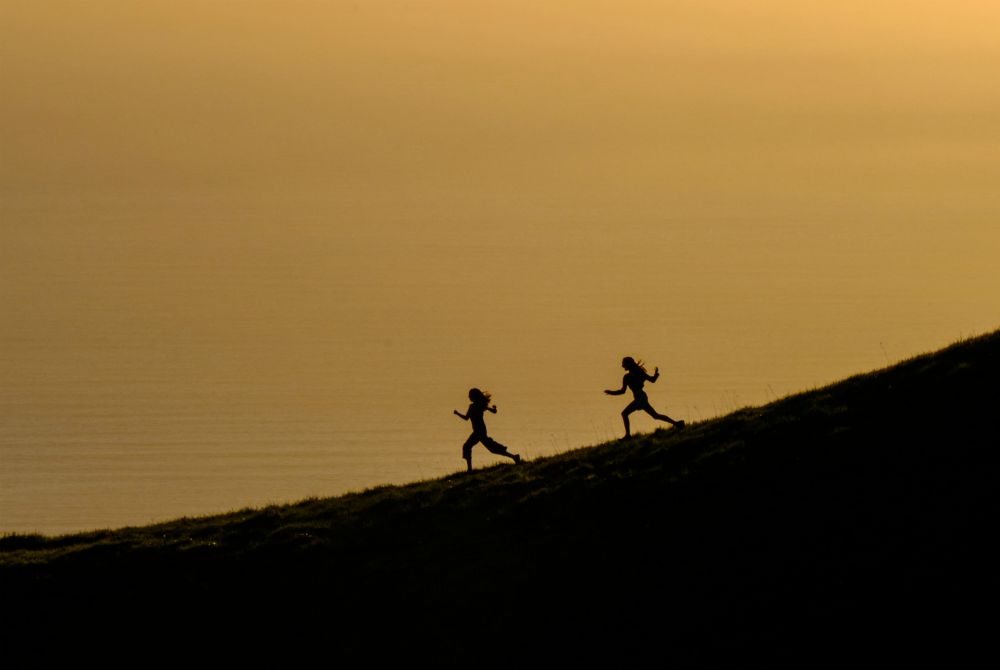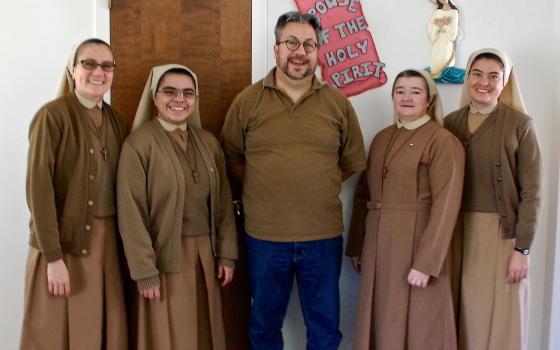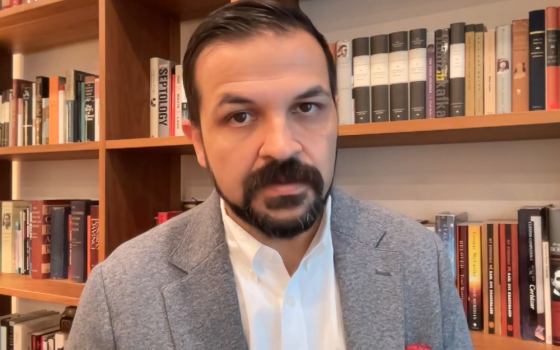
(Unsplash/Todd Diemer)
As I sat in church on Easter morning listening to the Gospel account of Jesus' resurrection, it struck me just how much running the disciples are doing. Regardless of your personal feelings on the sport, I think the amount of exercise the apostles are getting during Easter is significant and worth exploring a bit more.
Again and again, the Bible tells us Jesus's disciples made haste. The two Gospels that especially portray Jesus' closest followers as fast and on the move are the Gospels of John and Matthew. Jesus's followers weren't running to get in shape; they ran because they were both excited and fearful.
In John's account, Mary Magdalene goes to the tomb early in the morning on the day of the resurrection, sees the stone removed, and immediately runs to tell Peter and John. Peter and John then run to the tomb to see for themselves. With that kind of news, there's no time to be lost. In Matthew's Gospel, after both Mary Magdalene and the other Mary encounter an angel who gives them the message that Christ is risen, they immediately run to tell the others. Again, no time to waste.
I'm one of the weird ones who's always liked running, so I consider it to be a sacred act, a holy ritual. My best prayer time is during a long run when it's just me, an active body and a free mind and spirit. In the spirit of the Gospels, I wanted to share a few ways running has given me spiritual insight, especially in the Easter season:
Running, like Easter, takes a lot of preparation
I think one of the reasons many people don't like running is it hurts when you start out. It's not fun to struggle through the first five minutes of a run while out of shape. And it doesn't get better quickly. It takes a large amount of training to get to a level where going on a run is enjoyably free of side cramps, muscle pain and lack of oxygen. But after a few weeks (maybe months) of preparing your body for that type of exercise, you start to notice the scenery around you, the ease with which you glide down the sidewalk or the track — and that there's something pleasing about the rhythm of your breathing and your steps.
The same could be said of Lent. Making sacrifices, big or small, is not fun. Taking on any element of suffering usually incites the same reaction in me that running does for some people — no thanks. But as you stick to your discipline during Lent, it becomes easier and easier and prepares your heart to notice and share in the joy of Easter.
To run well you have to overcome the fear.
When it comes to running a race, one of the biggest obstacles is often our own fear. Throughout 12 years of track and field, I can't remember a single race for which I wasn't nervous. There's the fear of failing your coach or your team, the fear of not meeting your own expectations, and the acute fear of pain. It's definitely possible to run a race without pain, but you probably wouldn't get any better and you probably wouldn't win. When you run a race well, it hurts. It hurts because you gave everything you had in you, and that's not comfortable. But allowing yourself to feel that pain makes you better, and you improve yourself for the next time, pushing the limits of what you can do just a little bit further.
Advertisement
The Gospel of Matthew notes that when Mary Magdalene heard the news that Jesus had risen from the dead, she was "fearful but overjoyed." She could easily have let the fear win out, leading to disbelief or inaction. She had just endured a great deal of pain from losing Jesus, and she could have feared a similar letdown. Instead, she chose to run through the fear in order to go spread the good news of the Resurrection.
A happy runner is a fast runner
My track coach used to always tell us that a happy runner is a fast runner. I think he meant it to convey that, if I'm truly taking joy in the sport, the joy will naturally exude from me and will propel me to a new level. The joy comes first, and the getting faster part comes as a result. My coach meant that phrase in the most literal of ways when it came to track and field, but I've found it to apply to much more than running. When we allow ourselves to enter fully into the joy of our surroundings, we subsequently become better at whatever it is we're doing — prayer, relationships, school, career. Joy transforms us into the best of ourselves.
As I mentioned before, Mary Magdalene (and I imagine the other apostles once they heard the news) were fearful but overjoyed. Mary allowed Easter joy to carry her to be the very first one to share the news of the risen Christ. The apostles allowed Easter joy to take them from fear out into the world to spread the good news of Christ all across the land. Easter joy can transform us as well into the best versions of ourselves — the people God created us to be.
[Allison Walter is a high school theology teacher and track coach. She was formerly press secretary with Faith in Public Life and policy education associate with Network lobby in Washington, D.C. A graduate of St. Louis University and a native of Kansas City, Walter believes in the power of faith to transform society.]
Editor's note: We can send you an email alert every time a Young Voices column is posted to NCRonline.org. Go to this page and follow directions: Email alert sign-up.






